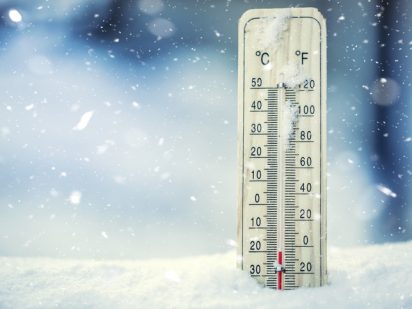There’s nothing quite like spending time in the great outdoors, but in North Dakota, the great outdoors can become a bitterly cold place. Here’s how you can stay safe (and warm) while outside during the coldest season of the year.
Dress Properly
When going outside in winter, make sure body parts most often affected by frostbite are covered in warm, dry clothing. This includes your nose, ears, toes, cheeks, chin and fingers.
Be sure to wear a scarf or knit mask that covers your face and mouth, mittens or gloves, water-resistant boots, a hat, a water-resistant coat, and several layers of loose-fitting clothing.
Watch for Symptoms of Frostbite and Hypothermia
Frostbite occurs when exposure to freezing temperatures damages areas of a person’s skin and the tissues underneath.
Frostbite symptoms include:
• Redness or pain in any skin area
• A white or grayish-yellow skin area
• Skin that feels unusually firm or waxy
• Numbness
Hypothermia is a potentially dangerous drop in body temperature, usually caused by prolonged exposure to cold temperatures. It often occurs at very cold temperatures but can occur at cool temperatures (above 40°F) if a person is wet (from rain, sweat or cold water) and becomes chilled.
Hypothermia symptoms include:
• Shivering
• Exhaustion
• Confusion
• Fumbling hands
• Memory loss
• Slurred speech
• Drowsiness
• Bright red, cold skin
• Very low energy
If someone is experiencing frostbite or hypothermia, seek medical attention as soon as possible. Get the person into a warm room or shelter, remove any wet clothing and warm the person under dry layers of blankets or clothing. For frostbite victims, place affected areas in warm-to-touch water. Do not use a fireplace, heat lamp, radiator, stove, heating pad or electric blanket for warming, and do not rub or massage affected areas.
Paying attention to outdoor conditions and dressing appropriately will keep you more comfortable and may also save your life.

